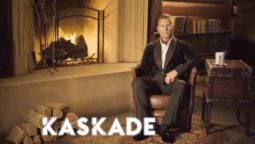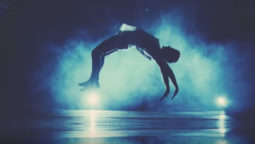“The Zone.” It’s a quirky term but I’m not sure what else to call it, a term I blatantly lifted from something I read in “The Complete Guide To Game Audio” by Aaron Marks. In the book, renowned game audio composer Jeremy Scott refers to when he is the most musically creative. He says “Once I get in the ‘zone,’ nobody better interrupt me or call because I’ll bite their head off. When my wife calls, the first thing she’ll ask is if I’m in the ‘zone’ or not. If I say yes, then she just hangs up without saying goodbye.”
I think as artists we are always trying to get there. Any artist will tell you that there is a tipping point where the piece they are working on falls into the hands of their deeper creative subconscious. It’s the mental sweet spot where simple technical process evolves into pure stream-of-conscious creativity. It’s the state where the creative mind takes precedence over and literally controls the technical mind, and for almost all artists, that is the headspace we are in when we’ve produced our best work.
As a music producer I find it near impossible simply to run into the studio for just an hour or two and expect that I’ll come out of it with anything compelling, as it takes me several hours just to get into the zone. However once I’m there, I’ll be able to complete an entire song start to finish in only a few hours.
I guess the big question is, how do we get there? Of course everyone is different and everyone has their own process. Here are a few ideas I’ve heard from others, and some that work for me.
Commit to no less than 5 hours for each studio session.
As I mentioned earlier, it takes me at least a couple hours to get into the right headspace. The first couple hours I find myself experimenting and creating the framework for a piece of music. This first couple of hours might yield an 8- or 16-bar loop, but as the piece evolves it’s the third hour where more complex processes start to come to mind, and often, these processes are tied to the arrangement of the tune.
Turn off the Internet in the studio. Turn off your cell phone.
Disconnect yourself from outside distractions. In order to get there, it’s important to immerse yourself in your work and build creative momentum. Stopping to check Facebook, answer emails and take phone calls will only impede your workflow, and bring you back to square one each time you get back to work. It’s important to stay focused.
Be able to turn it up.
Dance music is heard on all types of speakers but most of us are hoping to hear our music on a club sound system. So it makes sense that you try to bring yourself as close to that experience as you can get. If you have neighbors who will complain every time you bring up the volume, this will be a problem. Perhaps then it’s a good idea to invest in the best sounding and most comfortable headphones your money can buy.
Dim the lights in the studio.
…or turn them up, or light some candles. However you feel most at ease, this is how your studio should be lit. I’ve seen everything from Christmas lights to table lamps in the studio and it makes perfects sense. Your best work will come when you feel the most at home. My studio has no windows and some terrible lighting, so the best I can do is a floor lamp. My FL Studio desktop image is a photo of the sky, because that’s what works for me
Bring your vices into the studio.
Why not? But know your limits and understand how that sits with you in the creative process. If a glass of wine will help you see your work from a more objective view, then drink up. But it’s important to not let your inebriation get in the way of your technical knowhow and motor skills. Too much of anything will eventually distract. This is a fact: I never produced anything good after a bottle of whiskey, even though it was fun trying.
Eat well. Bring a snack and water with you.
Your brain will work better if it’s nourished, plain and simple. If you get hungry in the middle of the session your creative workflow will be distracted either by the process of taking a break to go get food, or just the simple fact that you are hungry.
Take a step back and turn off the screen regularly.
It’s so easy when you are in production mode to get hung up on where and when things look like they are happening inside your DAW. I sometimes find myself trying to smooth out automations, and visually clean up my midi and automation data. It’s easy to get distracted by how loud or quiet something looks on your VU meters when at the end of the day, it comes down to how it sounds.
When previewing the song you are working on, preview from the very beginning of the song, turn off the monitor screens, and listen with your back facing the speakers. This will give you a chance to take an objective listen and get a clearer picture of what your next steps are for finishing your song.
Organize your thoughts by taking notes.
In the process of writing your song you are going to constantly be previewing the song from beginning to end. This is a good time to get your notebook or phone out and start taking notes. Chances are there is a nice long list of edits you are going to need to make in order to get your track to its finished place. Instead of previewing then stopping to fix one thing, take down a list of everything that needs to be done. Do them, then preview again. The more and more you do this, the more ideas you will get.
Hit play and record.
Electronic music has a bad rep for being lifeless and angular. Arrangements are often way too calculated and tracks often sound simply played and muted. Find some elements to perform live from beginning to end, anything from hi-hats to chopped samples to mixer automations to bass lines. I find the act of performing parts creatively invigorating and it helps me get excited about my work and often leads to new ideas.






Join the discussion
comments powered by Disqus